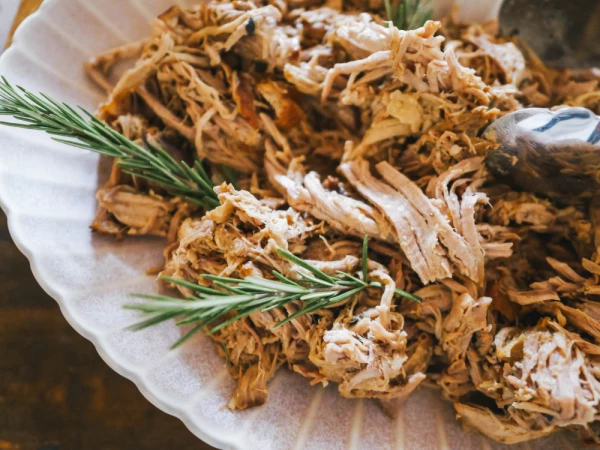For pulled pork, you want the internal temperature to reach 90–96°C (195–205°F). This is the sweet spot where the collagen and connective tissue break down, making the pork tender enough to shred easily with forks or your hands.
Here’s a quick breakdown:
90°C / 195°F – You can pull it, but it might still have some tougher bits.
93–96°C / 199-205°F – Ideal range for juicy, fall-apart pulled pork.
Got Leftovers? Here’s How to Reheat Like a Pro
If you’ve got leftover pork that’s been cooked but not yet pulled, this is how we reheat it without losing all that juicy goodness:
Place the piece into a deep pan, pour in any reserved pan juices and rendered oils (this is your flavor base), and add a generous splash of water—about 100–150 ml depending on the size of the portion. Cover with foil and reheat at 185°C / 365°F for 15–20 minutes, until it’s warmed through and fork-tender again. Longer if it's a large piece.
Let it rest, still covered, for 10 minutes before pulling. It stays tender, juicy, and full of flavor—perfect for a laid-back brunch platter or piled onto sandwiches. Honestly? Might be even better the next day.
Smacznego!

